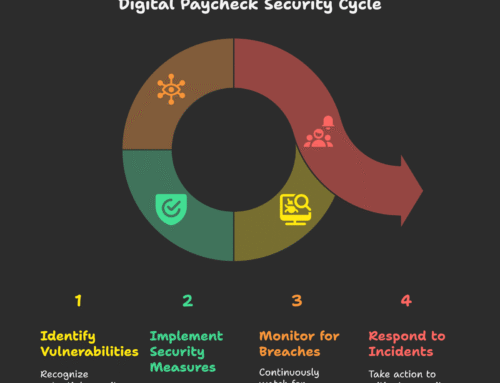How many times have you checked your email today?
How fast do you check your email and respond when you get a notification?
Most employees use up 23% of their days just on email, sending and receiving, on average, 112 emails per day.
The trouble with email
Looking at those numbers, it is not surprising that some leaders have begun to question the usefulness of email.
The CEO of Atos Origin, Thierry Breton, is one of the people who realized this when he noticed that his employees were distracted by the volume of emails they received during the day.
Clare Burge, owner of Get Organised, also shares this view:
“Email is a very selfish tool. People dump tasks into each other’s inboxes without thinking about whether they are being considerate. You become a slave to your inbox checking your email first thing in the morning until you go to bed.”
Many people can probably relate to the urge to check their email constantly throughout the day, even when there is no notification of a new email. Some of us have been conditioned to check and respond as soon as we can.
Those CEOs were correct. Email is hurting our productivity and our well-being. On average, it will take you 64 seconds to return to work after checking your email. That equals to hours of lost productivity per day.
Not only does email make you less productive, it also increases your stress level. Researchers at the University of California at Irving found that email was a major source of stress.
In response to this research, and their own observations, some CEOs have decided to ban email.
Banning email
In 2011, CEO Thierry Breton decided that he was going to take action. He decided that, by 2014, his organization would operate without email. Even though his company had over 70,000 employees across multiple offices, in many countries, he felt that the distractions caused by email were creating inefficient employees.
Although Atos still has not reached its goal of a zero email workplace, they have managed to reduce their amount of emails by 60%. There is no way to be exactly sure, but there are some correlations that show that these changes are part of the reason that earnings per share rose by 50% and administrative costs went from 13% to 10%.
Research may give us more insight into how and why Atos achieved those results. In the University of California at Irvine study, researchers measured how much email impacted stress and productivity. They observed a group of participants before and after an email ban.
What they found was that after the ban, participants began to communicate through telephone or face-to-face more often. They seemed to be able to focus more as they spent more time in applications than before. Their heart rates also decreased, leading researchers to believe they were less stressed. The participants themselves even said they felt more relaxed and productive without email.
Other companies have followed suit, banning email completely, or just at certain times.
Van Meter, a company in the US, decided that to give employees a better work-life balance that they would ban emails and calls on the weekends, as well as before 7 am and after 5 pm on weekdays. They even shut off email when employees have time off.
Louisa Levit, of Reliable PSD, tried a different approach. Her company banned email one day a week, except for one hour in the morning and one hour at the end of the day. During the middle of the day, employees kept email programs closed and notifications turned off. She found that this strategy has helped improve creativity, productivity, focus, relaxation and customer satisfaction.
While banning email may address the problem of productivity and stress, it may create other problems. There are companies that have banned emails with some success, but there are others that feel that placing bans on email eliminates the flexibility that some workers require.
Even though it has been shown to provide results, banning email may not be for every company. It is important to talk to employees, to evaluate their job tasks, and create a system that works for everyone.
A post-email world
When companies, especially multinational companies, ban email, then what do they do? Many companies have other systems in place.
Employees at Atos cannot just walk down the hall to talk to a colleague or make a phone call, as they have offices in multiple countries. They created a company social network and instant messaging system that established communities. The teams that work on various projects are able to communicate using the social network.
How they made it different than email is that they took out the notifications. There are no notifications when an employee receives a message. The employee has to decide to when they will go and look for a message.
Through this system, Atos has shifted from a culture of individualism to one of collaboration and community. They have also recovered 25% of their work time and increased customer satisfaction and efficiency by 30%.
A similar story is that of Clare Burge, who found that, in her company – Get Organised, there needed to be a replacement to email to ensure that people could still collaborate and communicate effectively. Her first attempt at going email free did not work, as there was nothing to replace it with. Now, companies are able to communicate and share documents using programs like Slack, Dropbox, Skype, Google, and many others that can replace email.
After being inspired by Clare Burge, Lee Mallon decided to make his company email free as well:
“I found myself checking my phone 150 times a day. Email had become too much of a distraction and a constant annoyance.”
He says that when he told his employees about the change, they were grateful. Going without email has not been without its challenges. The employees had to adapt to using different programs to communicate. Instead of just using email, they sometimes have to use three or four different programs in order to get information in the right form and to the right place.
In a company his size, issues that would have been handled through email are now resolved through a face-to-face meeting, a phone call, or a text.
While the system is not perfect and it does create some challenges, he feels that his employees communicate better. He also thinks that banning email has recovered about 20% of the workday. That is time that can now be used to work on other tasks.
Even though companies have found that banning email can be an intimidating task, most have been able to achieve great results, after realizing its impact on employees’ productivity. If you or your employees feel overwhelmed by email, it might be possible to propose a company-wide ban. If not, maybe you could just impose your own ban. Either way, it seems that trying to break the attachment we have with email could be good for our productivity and our mental health.
Download the eBook and learn how to use neuroscience to attract the right talent, retain high-performing employees and foster collaborative teams.
Image by Gilles Lambert for Unsplash






Leave A Comment